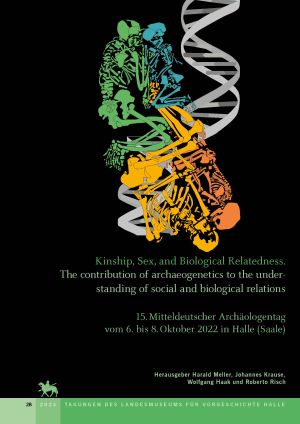Tagungen des Landesmuseums für Vorgeschichte Halle
The series of conference proceedings of the State Museum was launched in 2008. The occasion was the conference „Luthers Lebenswelten“, which was held in Halle (Saale) in 2007. The second volume was dedicated to the Archaeological Conference of Central Germany, which has been organised annually since 2008 by the State Office for Heritage Management and Archaeology Saxony-Anhalt in Halle and published in a timely manner. Over the years, more than 20 volumes of this series have been produced, documenting a broad spectrum of conference topics.
The volumes present papers by renowned scholars from a wide range of disciplines who were participants at the conferences in Halle.
In keeping with the large proportion of international authors, many of the contributions in this series are published in English along with a German summary. German contributions include an English abstract.
In order to ensure scientific quality, the contributions to the conference proceedings are usually subject to a peer review process.

Herausgeber
Prof. Dr. Harald Meller
Manuela Schwarz
Redaktion
Landesamt für Denkmalpflege und Archäologie Sachsen-Anhalt
– Landesmuseum für Vorgeschichte –
Richard-Wagner-Straße 9
06114 Halle (Saale)
Tel. 0345/5247-526
E-Mail: MSchwarz@lda.stk.sachsen-anhalt.de
Coming Soon
Der soziale Wert prähistorischer Beile: neue archäologische und archäometrische Ansätze
What was the value of axes in prehistoric societies? Were they tools, weapons, means of exchange, or status symbols? This volume contains investigations into raw material deposits and material analyses but also deals with the economic and social questions associated with resource management as well as with production and distribution processes. Where were raw materials exploited and by whom? Who manufactured the products and where? How were the trade networks organised? These contributions present European-wide studies of various micro- and macro-regions from the Neolithic Period to the end of the Bronze Age, each addressing one or more aspects of this vast topic.
Published so far
Kinship, Sex, and Biological Relatedness : The contribution of archaeogenetics to the understanding of social and biological relations
Relationships between people have always been the basis of social coexistence. Kinship – whether it is biological or social – has a very special significance. In archaeology, these immaterial connections have rarely been proven beyond doubt. In recent years, however, the field of archaeogenetics has developed methods and techniques that, given good DNA preservation, make it possible to determine the degree of genetic relatedness between two people who lived in the past.
The studies collected in this book, draw their knowledge on kinship from the fields of anthropology, archaeology, genetics, and the historical and social sciences. They demonstrate, on the basis of recent or previously known sites, which conclusions the new scientific insights allow on the one hand, but on the other hand also point out their limitations in the interpretation of (pre-)historic societies.








